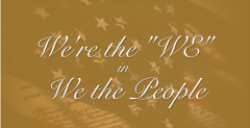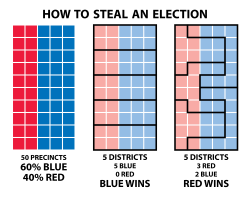Learn more about our U.S. Government
 The League of Women Voters of Delaware (WVDE) presents We're the WE in "We the People" - a quick Civics course on government for those who never had one, and a brush-up for those who have taken a civics course but need to be reminded what they learned.
The League of Women Voters of Delaware (WVDE) presents We're the WE in "We the People" - a quick Civics course on government for those who never had one, and a brush-up for those who have taken a civics course but need to be reminded what they learned.
This eagerly awaited series of civics education videos, funded in part by a grant from Delaware Humanities, has been published on the LWVDE YouTube Channel. It is comprised of two groups of videos - seven segments on the Federal Constitution and three on the Delaware Constitution.
As part of a partnership with PBS Digital Studios this course provides an overview of how the government of the United States is supposed to function, and how it actually does function. The course relates information about the branches of government, politics, elections, political parties, pizza parties, and much more.
 About the United States
About the United States USA.gov is the official web portal of the United States federal government. It is designed to improve the public's interaction with the U.S. government by quickly directing website visitors to the services or information they are seeking, and by inviting the public to share ideas to improve government. Branches of Government includes information on how the U.S. government is organized.
Gerrymandering, in U.S. politics, is the practice of drawing the boundaries of electoral districts in a way that gives one political party an unfair advantage over its rivals (political or partisan gerrymandering) or that dilutes the voting power of members of ethnic or linguistic minority groups (racial gerrymandering). The term is derived from the name of Gov. Elbridge Gerry of Massachusetts, whose administration enacted a law in 1812 defining new state senatorial districts. The law consolidated the Federalist Party vote in a few districts and thus gave disproportionate representation to Democratic-Republicans. The outline of one of these districts was thought to resemble a salamander. A satirical cartoon that appeared in the Boston Gazette graphically transformed the districts into a fabulous animal, “The Gerry-mander,” fixing the term in the popular imagination.

 What is Gerrymandering
What is Gerrymandering